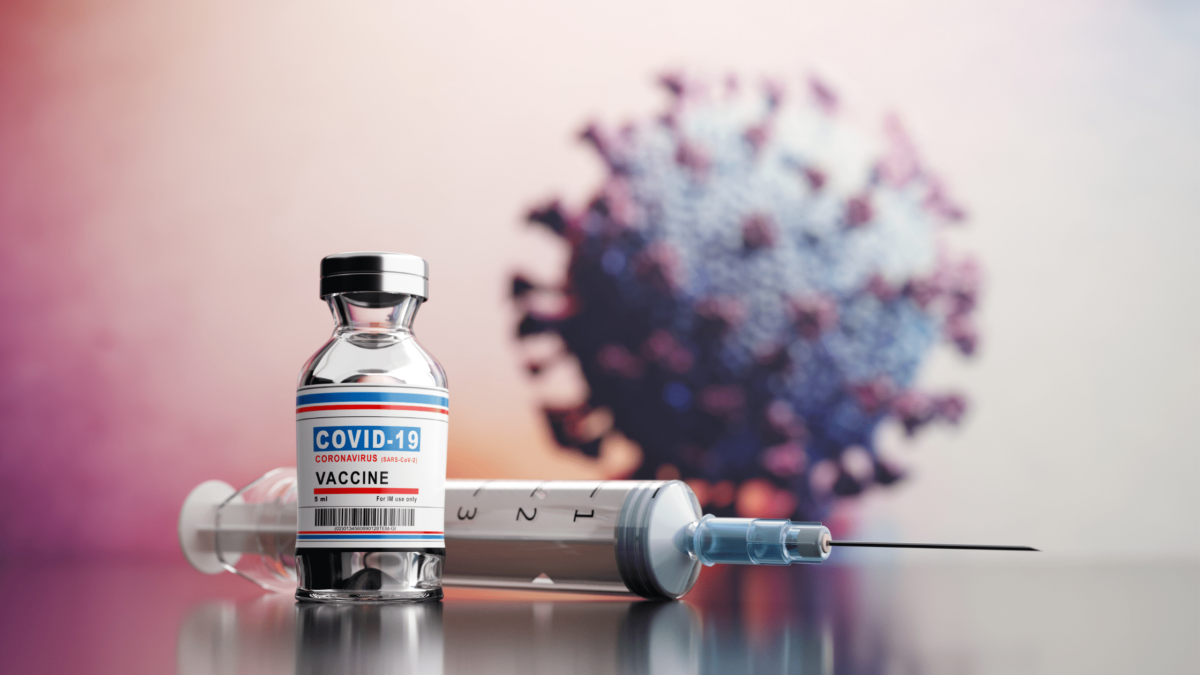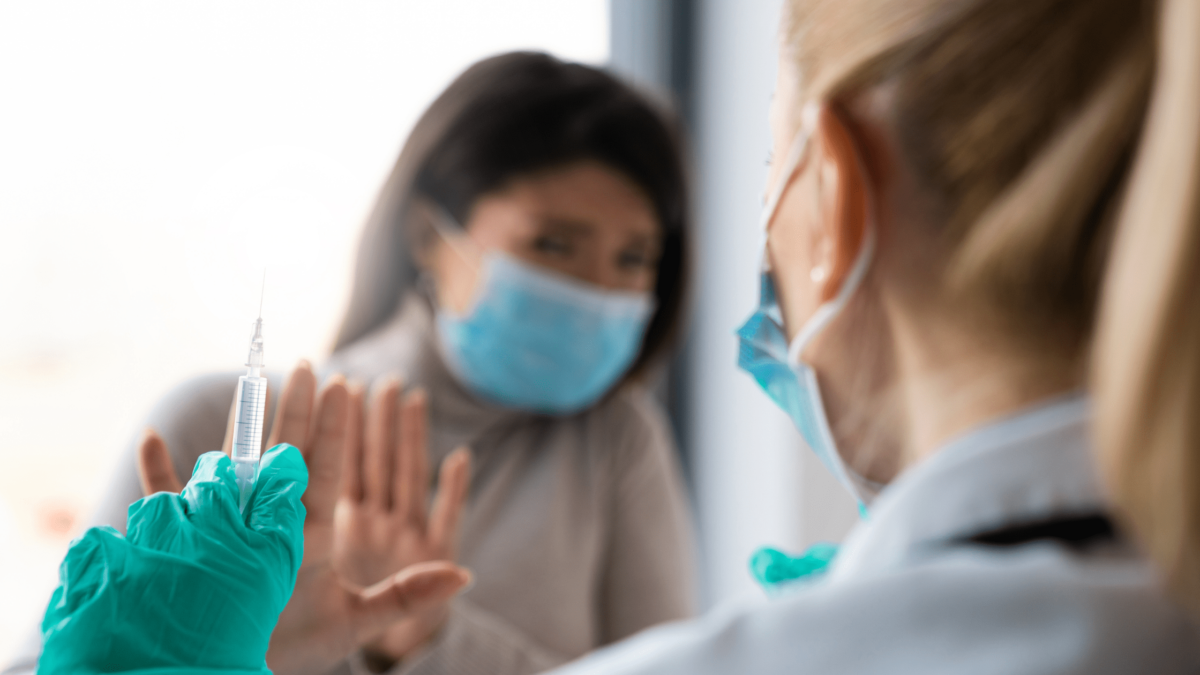Physician Health & Wellness in the Era of COVID-19: Better Days Ahead – the Rollout of Vaccines
“What is wellness? A state of complete physical, mental, and social well-being, and not merely the absence of disease or infirmity.” -the WHO

As I began writing this next installment on the series, “Physician Health & Wellness in the Era of COVID-19” I was struck by how much had changed in the last 6 months regarding COVID-19. Based on my research for the first article and the favorable trajectory of the pandemic was taking, my thesis for this second article seemed set: “Physician Health & Wellness in the Era of COVID-19 in the Rearview Mirror: A World Coming Out of Pandemic.”
At that time there was much of this hope and optimism. Coming out of the horror of the pandemic-ravaged Winter, this hope was desperately needed. Baseball was back, and though the Yankees weren’t doing well, people were watching and they were having fun! Businesses, restaurants and theatres were opening. People were making plans; they were getting back to living life. New York City was hosting an international flagship event cancelled in 2020 due to the pandemic: the US Open, one of the so-called Grand Slam events of tennis. This US Open was unique as sport history of the highest order. Novac Djokovic, a favorite to win, would accomplish two historic feats: break the record for Grand Slam victories at 21; and completing the “Calendar Slam,” winning all 4 Grand Slams in a single year. This had not been accomplished in the men’s tennis since Rod Laver did it 52 years ago in 1969. Considering the shocking state the city was in just 6 months before, the change was remarkable. Flushing Meadows was alive with smiles and activity. People were relaxed, casual in conversations, and having fun. As I watched it seemed to me that both Djokovic and New York City were climbing their own Mt. Everest, one for tennis glory, and the other for a place out of the horror that had been the COVID-19 pandemic.
Sadly, it was not meant to be. Djokovic did not summit his Mt. Everest being taken down in the final by a surgent Danil Medvedev. New York City was unknowingly beset with another surge of COVID-19: the Delta Variant.
BETTER DAYS AHEAD: THE ROLLOUT OF VACCINES
By March 2021, case rates were dropping and vaccines were rolling out with great demand. At that time it was conceivable that 70-85% of the population could be vaccinated before the onset of the fall flu. An end to the pandemic seemed to be in sight. Three vaccines were approved for Emergency Use: Pfizer/Biontech, Moderna and Johnson & Johnson and vaccination rates high.
However, a series of new variants began to cloud the picture with potentially dangerous properties that could threaten to derail the recovery. They were found to be more contagious than “wild type” COVID and were making their way across Europe causing severe illness and death, largely to the many unvaccinated at that time. The Kent (B.1.1.1) or Alpha variant was the dominant strain at that time; though more infectious, it was susceptible to immunity conferred by the new vaccines. Good news. Two other variants, the South African (B.1.351) or Beta and Brazilian (P.1) or Gamma were also of concern. But research showed the threat to be minimal when fully vaccinated.
In California, the vaccination program rolled out robustly with the most vulnerable prioritized. Vaccination rates continued to rise through April 2021 peaking on April 20, and began to decline. At this time case rates in the US were still decreasing and municipalities began to loosen up on restrictive public health measures. Public health tier designations dropped from purple, to red, to orange and yellow and finally dropped altogether. There was a sense of hope and ease as it felt like we were coming out of pandemic.
By May the demand for vaccinations was dropping and vaccine hesitancy was being discussed alongside some very confusing reasoning. We hadn’t quite reached the half-way point of fully vaccinating the population. “Come if you are vaccinated” policies began to take place in businesses and entertainment venues to show they were safe to attract audiences and provide an incentive for more people to get vaccinated. There seemed to be little impact.
THE RISE OF DELTA
About the time Novak Djokovic was making his historic run at the US Open, June and early July saw some of the lowest case rates in the US. After 18 months of pandemic, the nation was ready to live again. Life was returning to normal again. But again, it was not meant to be.
The Delta variant first identified in India in December 2020, spread rapidly through the mostly unvaccinated country of India causing massive numbers of cases, hospitalizations, and deaths. In the UK, Delta variant also spread rapidly despite high vaccination coverage, although there was much slower increase in hospitalizations and deaths.
In the US the Delta variant was first identified in March 2021. By early July immune escape properties were associated with this variant. Our greatest fear realized? However, soon we learned that vaccines, especially mRNA vaccines, when fully dosed, conferred a robust immunity. Not as potent as originally tested. But vaccines offered very good immunity against infection and strong protection against severe illness, hospitalization and death. However, fully vaccinated individuals could be infected by Delta, “breakthrough infection,” taking away the sense of ease the vaccinated had become accustomed to. But that infection would almost certainly not lead to severe illness, hospitalization or death.
By mid-late July COVID began to surge again in the US with increasing infection rates similar to those seen in the winter. Public health policies of social distancing and other restrictions returned.
“Many found it difficult to subject themselves to restrictions again when they had just been exulting in freedom from the waning pandemic. It seemed that we were being sucked back into a nightmare we had just woken up from.”
THE PANDEMIC OF THE NON-IMMUNIZED
And Delta was infectious, very infectious. It quickly became the dominant strain. This led to a surge beginning in late-July that peaked in late-August. Hospitals began to fill up again with the sick and dying. The surge hit the south eastern US and in places where community vaccination rates were low.
In fact, the spread of Delta was largely a reflection of the uneven vaccination coverage in the US, with substantially higher numbers of cases, hospitalizations, and deaths among states with low vaccination rates.
Protection offered by available vaccines against Delta was coming in and the news was favorable. Data from the UK suggest that full vaccination with the Pfizer BioNTech vaccine gave good effectiveness against asymptomatic infection with 88% protectivity. This is lower than the original 95% protection found in initial studies, but is still very good. It is clear that protection conferred from both mRNA vaccines provides very good protection against infection and robust protection against severe illness, hospitalization and death.
Yet, hospitalization and death rates began to climb again. There was much talk and anecdotal data amongst clinicians who treat critically ill patients. The consensus has been that the overwhelming majority of seriously illness, hospitalization and death from COVID-19 have been in non-vaccinated populations. I have heard many sad sentiments from those treating COVID patients whose suffering they see as preventable. “If only they had gotten the vaccine.”
Research from a CDC data review have recently shown that unvaccinated Americans have died at 11 times the rate of those fully vaccinated since the delta variant became the dominant strain. The study goes on to state that vaccinated people are 10-times less likely to be admitted to the hospital and five times less likely to be infected than unvaccinated. An Israeli study showed that Israel’s unvaccinated population of 17% now account for 65% of all serious COVID-19 cases. In the study they stated that per capita, for every death of an Israeli over 60 that had received the booster shot, there are 15 deaths of unvaccinated Israelis in the same age group.
A wide array of data supported the safety and effectiveness of vaccines against the Delta variant, especially in preventing serious illness, hospitalization and death, and that breakthrough cases in fully vaccinated individuals tend to be less serious.

The WHO defines vaccine hesitancy as a “Delay in acceptance or refusal of safe vaccines despite available vaccine services.”
VACCINE HESITANCY
Vaccine hesitancy, the reluctance of people to accept proven and effective vaccines was already a growing concern before the COVID-19 pandemic. A framework developed from research done in high income countries, called ‘the 5C models of the drivers of vaccine hesitancy’ provides five main individual determinants for vaccine hesitancy: confidence, complacency, convenience (or constraints), risk calculation, and collective responsibility. Promoting the uptake of vaccines will require understanding whether people are willing to be vaccinated, the reasons why they are willing or unwilling to do so, and the most trusted sources of information in their decision-making.
PRESENT STATE OF THE COVID-19 PANDEMIC IN NUMBERS
Numbers for COVID-19 pandemic from Johns Hopkins as of September 25, 2021 were, worldwide 231,379,222 COVID-19 cases and 4,741,510 deaths (2.2%) with 6,061,054,605 vaccine doses administered. In the United States (population 328.2 million) there were 42,887,401 cases (13.1% population) and 687,572 deaths (1.6%) with 387,914,498 vaccine doses administered with an estimated 183,400,00 fully vaccinated representing 65% of the US population age 12 an older (vaccine-eligible). Of Americans age 65 and older, 83% are fully vaccinated. The United States has an overall mortality of 209 per 100,000 general population. In California, (population 39.7 million) there were 4,676,539 cases (11.78% of population), 68,551 deaths (1.47% cases) (0.17% total), 50,255,214 vaccine doses administered and 23,724,626 fully vaccinated which is 60.39% of the general population. In Santa Barbara, (population 448,200) there were 43,353 cases, 505 deaths (1.16% cases) (0.1% total) and 540,306 vaccine doses administered with 68.0% of eligible residents over age 12 fully vaccinated, 76.2% partially vaccinated (countyofsb.org). In San Luis Obispo, (population 283,111) there were 28,582 cases, 324 deaths (1.13%) and 326,028 vaccine doses administered with 63.2% of residents over age 12 fully vaccinated, 70.6% partially vaccinated (recoverslo.org).
Would you like to read more blogs in this article series?
Click the links below.
Physician Health & Wellness in the Era of COVID-19: “If not now, when?”
Disclaimer
This blog is for informational purposes only and is not intended to serve as medical advice, diagnosis, or treatment. Always consult with a licensed healthcare professional for personalized care.
